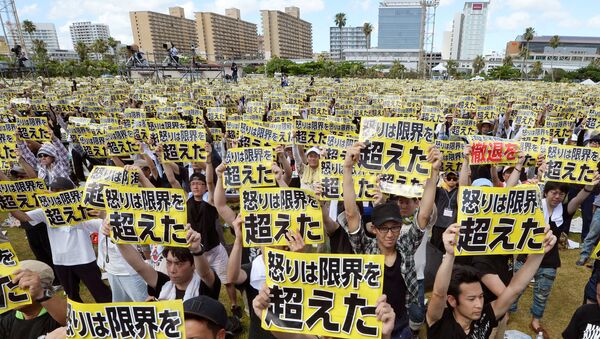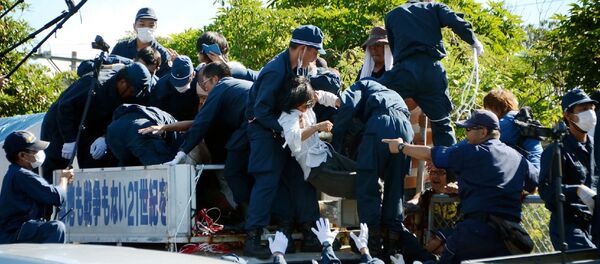The US military announced preparations on Friday for the return of a large area of occupied land on the Japanese island of Okinawa, in the face of mounting protests against the US forces stationed on the island.
Over 50,000 US nationals, including 30,000 military personnel and civilian contractors, are currently posted in Okinawa. The island and its US base allow Washington to assert continued pressure against China’s regional ambitions.
The base has long been unpopular with local residents, but Japanese Prime Minister Shinzo Abe has traditionally viewed the American presence as a necessary counterweight against Beijing. That calculation has shifted after a slew of incidents in recent months, including a rape, a murder and a drunk driving accident at the hands of US service personnel.
"As part of the Treaty of Mutual Cooperation and security between the United States of America and Japan, the US is granted the right to certain exclusive-use facilities for the purpose of the defense of Japan and maintenance of peace and security in the Far East," Maj. Gen. Charles Chiarotti, US Forces, Japan deputy commander, said in a statement Friday.
"Under the treaty, once facilities or areas are no longer necessary to meet those ends, they will be returned to the Japanese government," said Maj. Gen. Chiarotti. "In this case, the construction of several replacement helicopter landing zones to consolidate training within other existing areas will allow the return of almost 4,000 hectares (15.5 square miles/40 square km)."
Many interpret the land return as a bid by Washington and Tokyo to quell local unrest that exploded in May when the body of 20-year-old Japanese woman, Rina Shimabukuro, was found following weeks of searching. A US defense contractor and former marine was arrested in connection with the brutal murder.
Okinawans have long resented the US military occupation, especially as a disproportionate number of local crimes has been attributable to American servicemen.
Tensions between local residents and American forces are now at their lowest point since 1996 when the US and Japan last agreed to relocate a number of troops following the rape of a 12-year-old local schoolgirl by three US military personnel, that led to similar mass demonstrations.
In addition to the land return, Lt. Gen. Lawrence Nicholson, the US commander on the island, announced a 30-day curfew and called for a "period of unity and mourning," following Shimabukuro’s death.
In a press release on the land transfer, Lt. Gen. Nicholson sought to reassure the community, saying, "This decreased training area on Okinawa will not deteriorate our commitment or our ability towards working with the Government of Japan and our partners in the Japan Self Defense Force in mutual defense of this country."
He also acknowledged that the decision was made in response to protests of the American presence on the island, saying, "We are respectful of the feelings of Okinawans that our footprint must be reduced."




